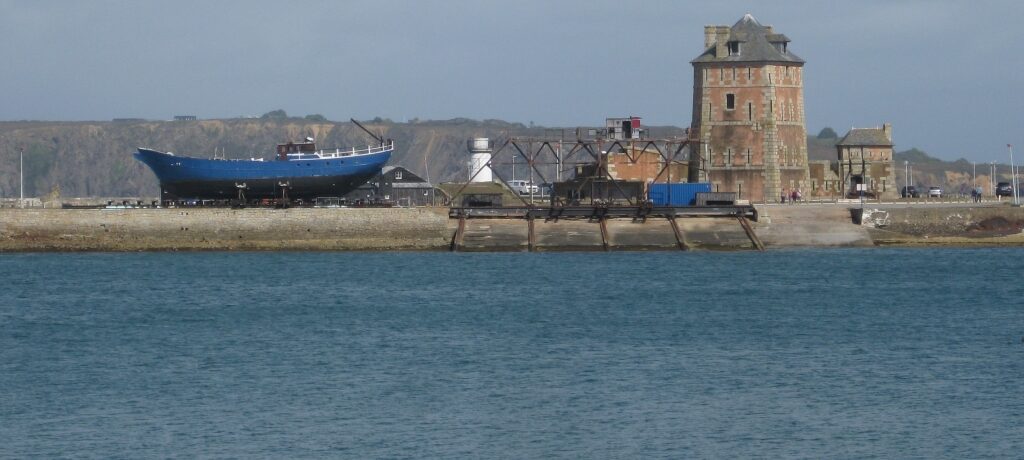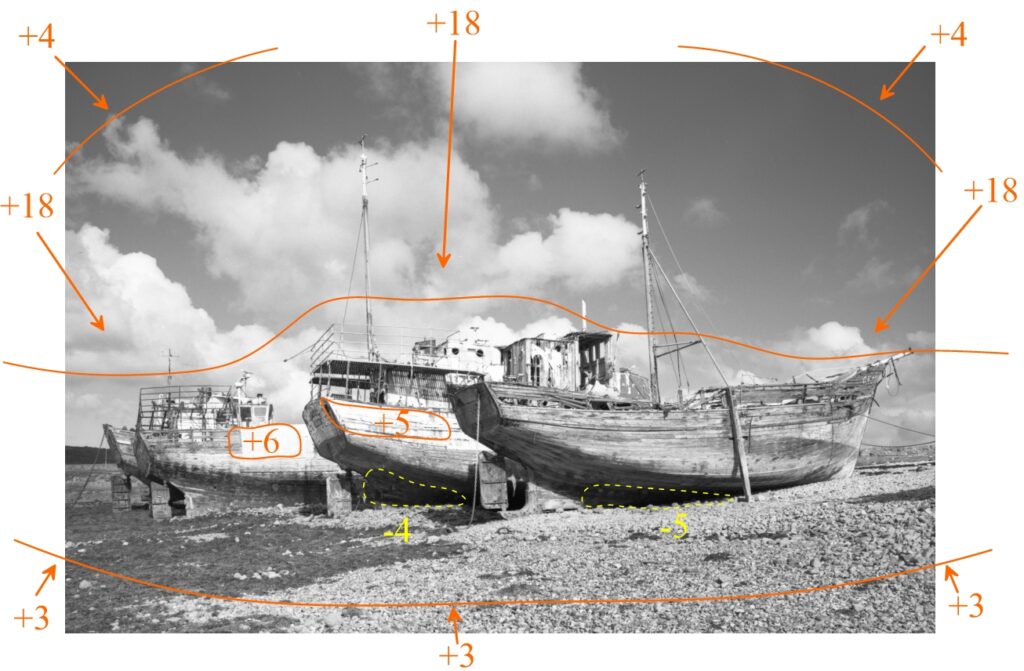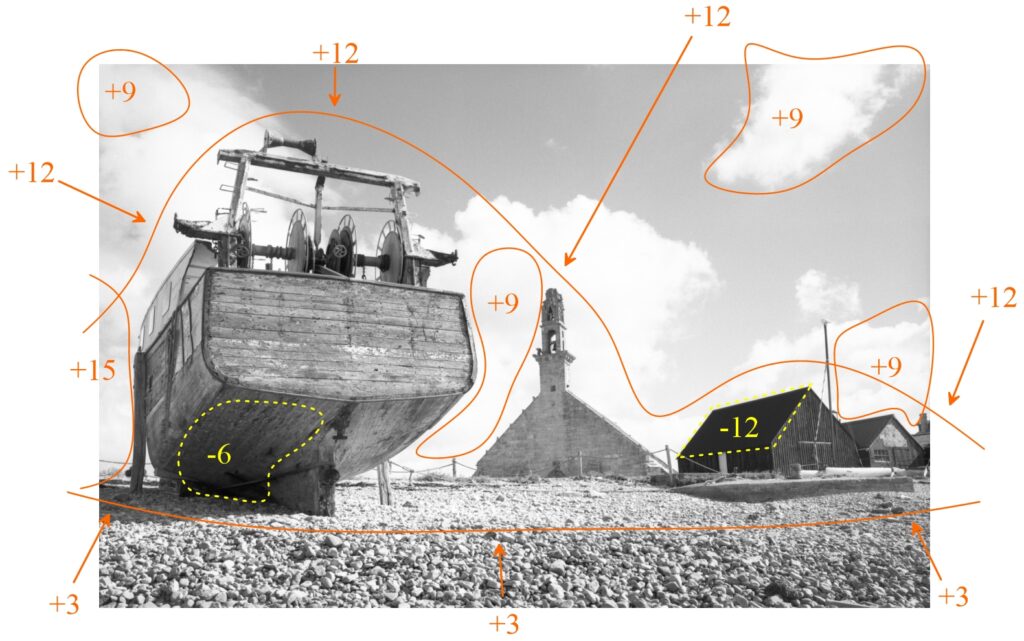
Camaret sur Mer, (Breton: Kameled), is a nice fishing village on the Crozon peninsula in Brittany, France. A ship graveyard at its harbor is a great location for black and white photography. I had visited the place two times during a vacation in September 2022, but only at the third time, weather and light were right to set up the Plaubel Peco Junior 6×9 view camera. The wind was a little strong that day, causing two threats: vibration of the camera during long exposures, and rapidly changing cloud patterns. The latter let me sometimes expose two or three frames of the same image, not to bracket exposure but trying to catch the right cloud pattern matching the foreground. In addition, traffic of cars and tourists on the mole had to be avoided. An orange filter was used to darken the sky and for some frames a polarization filter was used in addition. All exposures were made on Ilford Delta 100 and focal length of the lenses was from 75 mm to 270 mm.

The first image of the gallery “Boats & Clouds” needed quite some work in the darkroom to turn out as I had imagined it when I was fighting with the wind tearing on the dark-cloth. The shadows at the bottom of the boats were placed at zone II-III. I used split grade printing with the soft exposure of 19.1 s and the hard exposure of 8.7 s. During the soft exposure the dark parts at the bottom of two boats were dodged for 4/12 and 5/12 of an f-stop. Then the bottom and corners got a brief burn of 3/12 to 4/12 of an f-stop and the white parts of the two boats 5/12 and 6/12. Then the whole sky area received an extra 18/12 f-stop of grade 00.

For the second image “Three Sterns” with a larger focal length I changed the tripod location only a little bit. While the clouds were an important part of the first image, here details of the rotting boats were the focus. I had to wait for the sun to come out from the clouds, so that the chain hanging down from the stern of the right boat got fully illuminated. The shadows were placed on zone III and the burning pattern was similar to the first image, only the upper right corner needed some strong burn of 12/12 f-stop at grade 00. The split grade printing times were 19.1 s and 6.8 s for the soft and hard grade, respectively.

The closer view to the first boat in the row in the image “Stern & Wheelhouse” had less contrast than the previous images and thus printing was more straight forward. With the shadows measured at the bottom of the wheelhouse roof and placed in zone III only the white planks of the boat on the left had to be burned with 10/12 of an f-stop and the bottom left and right corners got an extra 5/12 and 6/12 of an f-stop burn.
The before mentioned chain was the hero of the “Stern & Chain” image in portrait format. The shadow at the bottom of the boat was again placed in zone III and the soft and hard printing times were 31.2 s and 7.2 s, respectively. Only the bottom right corner received an 5/12 of an f-stop burn, and a small bright spot at the rudder blade was hidden with 30/12 of an f-stop and a small hole in the burning card.
The “Stern & Net Winch” image was the most trouble some concerning the cloud pattern. The one shown here is my favorite of three trials. In the other two the pattern itself was also good, but clouds were moving so fast, that the ½ s exposure made them too blurry. The dark parts of the winch, which were placed on zone III were dodged during the soft exposure of 15.0 s for about 4/12 of an f-stop; both sides got an extra 9/12 and the very bottom 2/12 of an f-stop. The hard exposure was 5 s.

The last image in the gallery “Stern & Chapel” was the one that took most time in the field and most time in the darkroom. To get clouds well and avoid cars and people took quite some patience. I waited mainly for a white cloud background of the Notre-Dame de Rocamadour, a chapel with its origin dating back to 1527. The contrast was by far larger than what the paper would be able to show. So, the very dark roof of the boathouse had to be heavily dodged; and some dodging was also used to lighten the bottom of the boat a little. Then the clouds needed burning with the soft grade while the basic exposure was 35.2 s and 9.78 s for soft and hard grade, respectively.
